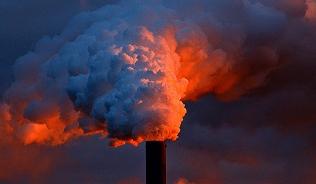environmental SCIENTIST | The World Wakes up to Waste | February 2020
Jonathan Ritson and Libby Peake report on the contaminants in food packaging and what needs to be done to reduce them.
Food contact materials (FCMs) play a vital role in ensuring the safe delivery and preservation of food products. When designed and used correctly, they protect foods and extend their shelf life, which can result in less food waste and reduce the risk of illness through spoilage. However, there have been growing scientific, regulatory and consumer concerns about the fact that potentially endocrine-disrupting chemicals migrate from FCMs into food. This has changed some manufacturer behaviour, with many products now being advertised as phthalate- or bisphenol-free, but there has been no coordinated response and public exposure routes remain.
If these routes are not closed off and recycled content becomes more common, there is an increasing risk that compounds that should not be in contact with food are present in FCMs made from recycled material. These concerns also hold true for material that is destined for composting rather than recycling. The rise in compostable material used to replace single-use plastic opens new avenues for the potential for chemicals to re-enter the food chain and be released into the wider environment when compost is spread on soils. As the economy becomes more circular, the use of potentially harmful chemicals must be addressed.
Unclear risk from plastic materials
Alongside the main polymer, plastics contain a range of compounds that are included to add key extra properties to the material. As well as this, chemicals may be added unintentionally as impurities from their production or with contaminated recycled material. In many cases, toxicity information is not available for all the additives, meaning the impact on human health is currently unknown. Work by CHEM Trust has shown that the public is exposed to thousands of plastic additives, some of which may be dangerous, whereas others may be perfectly safe. However, it is not currently possible to be sure of their identity or concentration as the formulations of plastics are considered trade secrets.1
Risk-based standards for FCMs cannot be implemented without access to the chemical identity and concentration of different additives in plastic. Without this information it is impossible to assess the risk to human health in the use and reprocessing stages of the plastic. It is already clear, though, that many endocrine-disrupting compounds are turning up in FCMs, albeit at low concentrations.2
The current state of affairs risks a crisis in consumer confidence as the public becomes increasingly aware of the potential for exposure to chemicals of concern. Without detailed knowledge of what chemical additives are in FCMs, by accident or design, there is a risk of creating a culture of suspicion around materials that may in fact be perfectly safe.
Low concentrations of brominated flame retardants, including compounds that have been banned, have been found in around 50 per cent of household waste plastics, suggesting that circular material flows can be contaminated for extended periods if plastics for different uses cannot be accurately separated.4 Removing additives that are potentially toxic should be a priority as the circular economy grows, to decrease the risk of keeping these compounds within the loop.
Coatings and dyes
Plastics have received a lot of public, media and policy attention. However, many other FCMs do not have any regulations to protect consumer health from chemicals in the material beyond a general requirement that they do not endanger health. These can include coatings and dyes on paper, cardboard and metals that make them water resistant or prevent chemical interactions. Bisphenol-A, for example, is still sometimes used in coatings in metal cans.
Recycled cardboard
Over 250 compounds of potential health concern have been identified in recycled cardboard used in food contact material,5 many of which have no related toxicological data, meaning understanding risks is impossible. Phthalates and bisphenols (used in adhesives, inks and thermal paper) have been detected in recycled cardboard used for food packaging3 with demonstrated migration into food.6
Mineral-oil inks
Mineral oils, frequently used in paper and cardboard packaging, can also migrate into food. This class of compounds can have varying effects, but some are known to concentrate in the liver and affect its function, while others are carcinogenic.4 Although commonly adopted technical processes in the recycling of paper and board, such as deinking, can reduce contamination, these cannot protect consumers against all chemicals. So a precautionary approach should be adopted towards FCMs, with substitutions, such as vegetable-based inks instead of mineral-oil inks, adopted where possible.
Compostable containers
Compostable materials are increasingly being adopted for FCMs as consumers and businesses seek alternatives to plastic. These materials, whether compostable plastic or paper-based options, are potentially useful in instances where food contamination is likely. Currently, though, they may also present a public health concern if they contain persistent organic pollutants (POPs) that can enter the food chain, contaminate soils or reach drinking water supplies when the compost is returned to the environment.
Recent evidence has shown that the presence of compostable food containers in waste treated at industrial composting facilities increases the levels of per- and poly-fluoroalkyl substances (PFAS) in the resulting compost.7 This group of toxic chemicals is used to improve water resistance in paper and cardboard materials, but is linked to health problems such as high cholesterol, lowered fertility and testicular cancer. Its presence in compost is especially worrying as PFAS can migrate into food grown in contaminated soil and compost, resulting in accumulation in humans.8 In the wider environment, PFAS has been found in Alaskan fish despite the great distances from major sources, indicating worrying dispersion and accumulation properties.9 This issue is just one example that highlights the need to consider the identity, concentration and ultimate fate of all chemicals included in materials likely to enter material or organic matter recycling loops.
The need for coherent regulation
The trade-offs between various environmental impacts of different FCMs represents a large flaw in current regulation, which has been led by the EU. On the one hand plastics are regulated but the regulations are outdated, and on the other, many alternatives to plastics – including paper, card and linings – are not covered by harmonised regulations to protect public health beyond a general requirement that they do not endanger health. As consumers and manufacturers seek alternatives to plastics, the circular economy will grow. To make it successful – and also to understand and minimise potential risks to public health – FCM regulations must be urgently reviewed and strengthened. That process will need access to the identity and concentration of known additives in plastics and other materials, along with a focus on designing both materials and systems for circularity, so that harmful chemicals do no enter FCM recycling loops.
Jonathan Ritson is a policy analyst at Green Alliance. Prior to this he completed a PhD and post-doctoral research in environmental engineering at Imperial College London and the Grantham Institute – Climate Change and Environment.
Libby Peake is head of resource policy on resource stewardship at Green Alliance and manages the Circular Economy Task Force, a forum for policy, innovation and business thinking on efficient resource use in the UK. The task force is currently considering how to
- Groh, K.J., Backhaus, T., Carney-Almroth, B., Geueke, B., Inostroza, P.A., Lennquist, A., Leslie, H.A., Maffini, M., Slunge, D., Trasande, L., Warhurst, A.M. and Muncke, J. (2019) ‘Overview of known plastic packaging-associated chemicals and their hazards’, Science of the Total Environment, 651, pp. 3253–3268.
- Bang, D.Y., Kyung, M., Kim, M.J., Jung, B.Y., Cho, M.C., Choi, S.M., Kim, Y.W., Lim, S.K., Lim, D.S., Won, A.J., Kwack, S.J., Lee, Y., Kim, H.S. and Lee, B.M. (2012) ‘Human risk assessment of endocrine-disrupting chemicals derived from plastic food containers’, Comprehensive Reviews in Food Science and Food Safety, 11, pp. 453–470.
- Geueke, B., Groh, K. and Muncke, J. (2018) ‘Food packaging in the circular economy: overview of chemical safety aspects for commonly used materials’, Journal of Cleaner Production, 193, pp.491–505.
- Pivnenko, K., Granby, K., Eriksson, E. and Astrup, T.F. (2017) ‘Recycling of plastic waste: screening for brominated flame retardant (BFRs)’, Waste Management, 69, pp. 101–109.
- Biedermann, M. and Grob, K. (2013) ‘Assurance of safety of recycled paperboard for food packaging through comprehensive analysis of potential migrants is unrealistic’, Journal of Chromatography A, 1293, pp. 107–119.
- Biedermann, M., Ingenhoff, J.E., Zurfluh, M., Richter, L., Simat, T., Harling, A., Altkofer, W., Helling, R. and Grob, K. (2013) ‘Migration of mineral oil, photoinitiators and plasticisers from recycled paperboard into dry foods: a study under controlled conditions’, Food Additives & Contaminants – Part A, Chemistry, analysis, control, exposure & risk assessment, 30, pp. 885–898.
- Choi, Y.J., Lazcano, R.K., Yousefi, P., Trim, H. and Lee, L.S. (2019)‘Perfluoroalkyl acid characterization in U.S. municipal organic solid waste composts’, Environmental Science & Technology Letters, 6(6), pp. 372–377.
- Ghisi, R., Vamerali, T. and Manzetti, S. (2019) ‘Accumulation of perfluorinated alkyl substances (PFAS) in agricultural plants: a review’, Environmental Research, 169, pp. 326–341.
- Byrne, S., Seguinot-Medina, S., Miller, P., Waghiyi, V., von Hippel, F.A., Buck, C.L. and Carpenter, D.O. (2017) ‘Exposure to polybrominated diphenyl ethers and perfluoroalkyl substances in a remote population of Alaska Natives’, Environmental Pollution, 231, pp.387–395.
Image Source: © ViDi Studio | Adobe Stock





